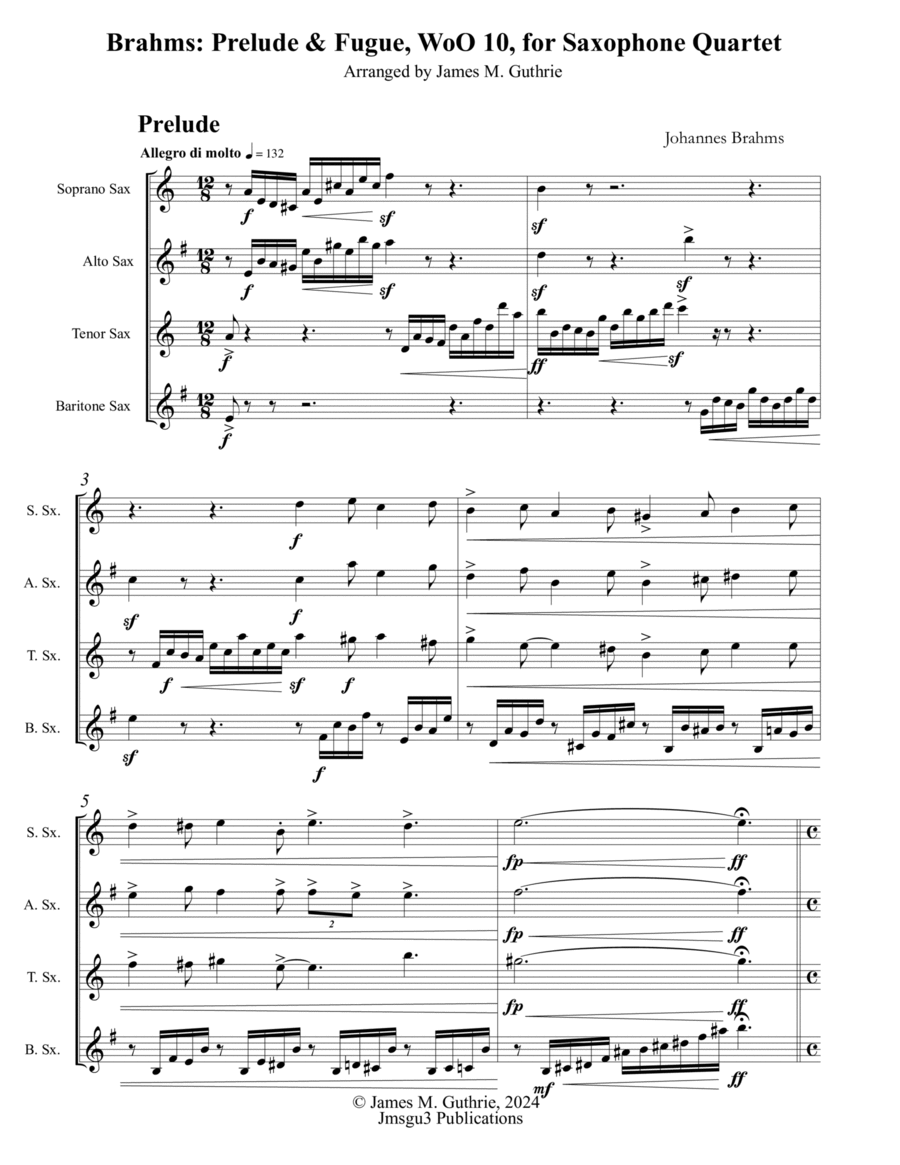Saxophone Quartet,Woodwind Ensemble Alto Saxophone,Baritone Saxophone,Soprano Saxophone,Tenor Saxophone - Level 4 - Digital Download SKU: A0.1420209 Composed by Johannes Brahms. Arranged by James M. Guthrie. 19th Century,Chamber,Contest,Festival,Historic,Romantic Period. 30 pages. Jmsgu3 #1001614. Published by jmsgu3 (A0.1420209). Brahms's Prelude and Fugue in G minor, WoO 10, is an essential early organ work demonstrating his mastery of counterpoint and the organ as a medium. The Prelude and Fugue were composed in the mid-1850s when Brahms was intensively studying counterpoint and turning to the organ for his contrapuntal skills. The Prelude begins quietly but builds in power and tension. At the same time, the fugue transforms the central theme into a lean, darkly probing juggernaut that accrues tension as it develops. These early organ works frame Brahms's entire oeuvre, as they were composed at the start of his career, while the Eleven Chorale Preludes, Op. 122 was his final work, composed just before and after the death of Clara Schumann. Brahms's organ compositions thus bookend his prolific output, spanned symphonies, concertos, chamber music, choral works, and more. Overall, Brahms's Prelude and Fugue in G minor, WoO 10, is an important early work that showcases his mastery of counterpoint and the organ and is a significant marker in developing his compositional style.
